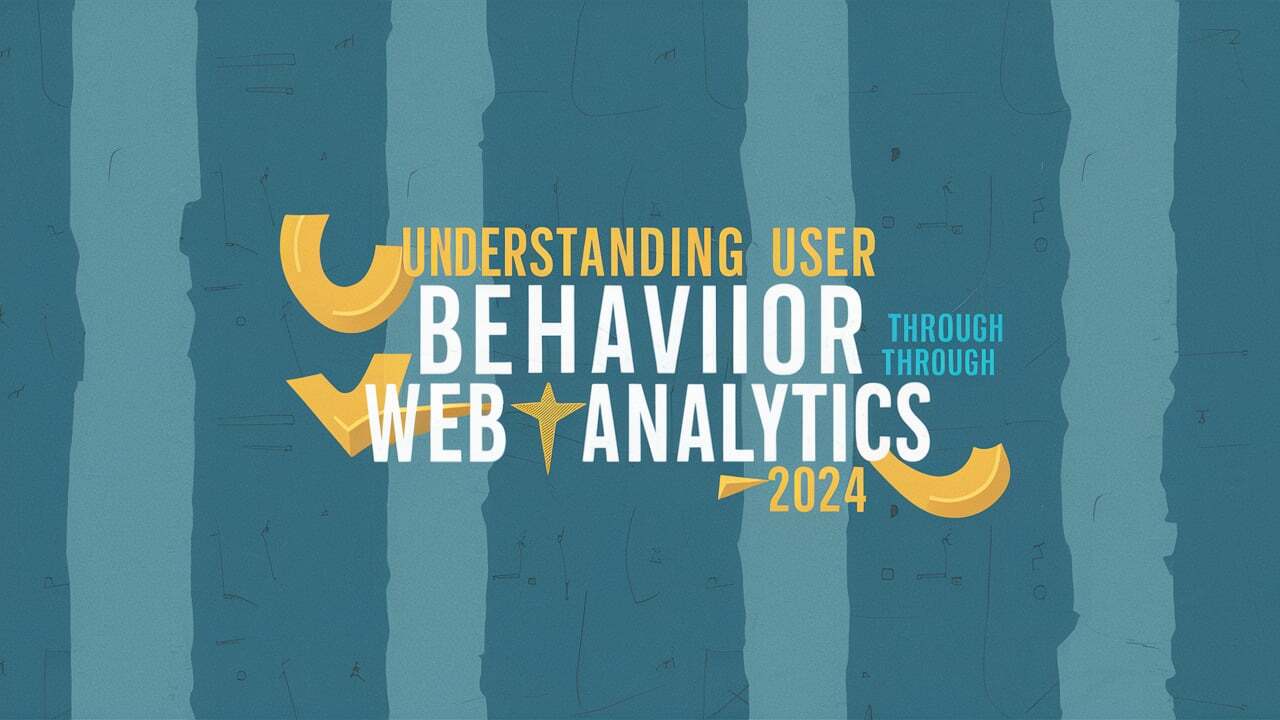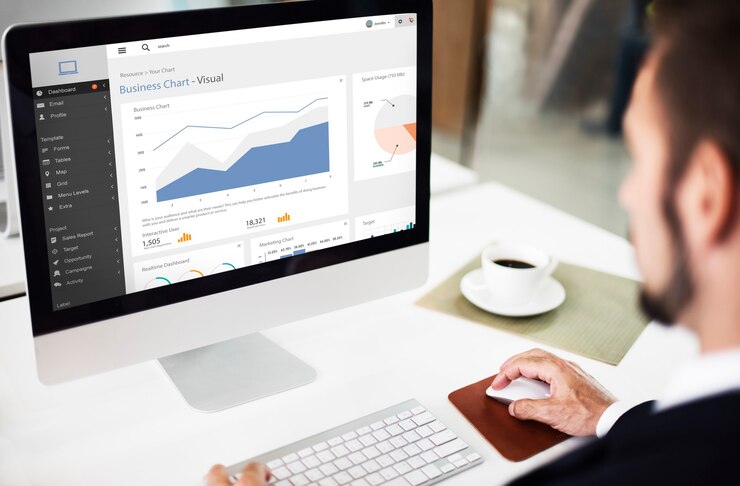
Understanding User Behavior Through Web Analytics 2024
It means much, at a granular level than merely counting page views and visits as most are accustomed to on primary web metrics. It’s detail goes all the way down to user interactions, giving a complete view of exactly how visitors flow through your site and what content interests them as you convert it. Web analytics is nothing but by using the data in a website, businesses can do complete analysis of their audience and how people are behaving on your site that means it gives you idea where there needs improvement or enhancement to provide more better experience through usage.
In this article, we will be sharing about web analytics and how powerful it can actually give you an insight on user behavior, the fundamental elements of it, strategies when implementing web analytics successfully to get your best results and ideas in which you could obtain from informative data meant for general site enhancement possibilities along with each business-driven development.
1. First principles of web analytics
Web Analytics is a recent form of the powerful purpose behind doing data-driven decision-making in digital world. At the heart of web analytics is a close examination and quantification of website data-an activity widely used to understand usage, actions taken by visitors on sites (conversions), user experience- including but not limited too page load times, navigation path through content based resources as well as overall performance. This procedure is more than plain traffic counting; it takes an insight into user behavior, the performance of your site and measuring online presence effects on a large scale.
Web Analytics in its core should answer the key question WHAT web analytics is for – it helps businesses to understand their audience better. We track a whole host of metrics, which gives companies unprecedented insight into who their visitors are, where they’re coming from and going on the site-and why. This data is essential for the best website design, content and marketing strategy.
Web analytics consists of the following important elements:
a) Data Collection: It is the process of collecting raw data regarding people who are coming on a website and their operations with/within that site. Options include server log analysis and page tagging (as well as filters to perform on that data).
b) Processing Data: The data which is collected is processed and lumped into categories and metrics of significance.
c) Reporting: Information reported in human digestible format using dashboards, visualizations etc
d) Insights: Confusing the data based on specific outputs or making choices from them.
Each web analytics tool has dozens of different metrics, and all the heuristics provide you with a part of user behavior. Key Metrics:
- Visits/Sessions: The number of browsing sessions on your website.
- Unique Visitors: This is the number of different people that visited your website.
- Pageviews x pages viewed.
- Bounce Rate: The ratio of all single-page visits to total page views (we love asking you questions)
- Average Time on Site : The average time users spent reading Material.
- Conversion Rate: Measure of the percentage of visitors who perform a desired action.
Having an ontology for these metrics helps a lot to get one single view of the user behavior. For example, having a high number of visits but low average time on site may mean that your website is driving traffic, yet not really encouraging conversation.
In short, mastering the basics of web analytics will help businesses build a solid foundation upon which to base data-driven decisions and ongoing improvements to their online existence.
2. Using Web Analytics to Track User Behavior:

It is essential to arm web analytics in order for you to gain an accurate and able-data-driven knowledge about a user. This is a complex process that consists of many steps and considerations in order to make sure you get the right data every time!
Step 1: Selecting a Web Analytics Tool Picking up the right tool suited to you is half the job done when it comes to implementing web analytics. Although the use of Google Analytics is by far the greatest and offers a comprehensive free version, there are other solutions such as Adobe Analytics or Matomo/ Mixpanel. Take into account your development skills, budget constraints, tracking specifications and data privacy needs while choosing.
Step 2: Implement Tracking Code After you have selected your tool, the next step is setting up tracking code on your website. Usually this consist to add a JS snippet in each page we want to track. There is also plugins or integrations for many of the CMS (content management systems) to make this process easier as well.
Step 3: Define Goals and ConversionsClearly define the interactions in your site that qualify as success. These could be anything from a purchase, to newsletter signup or form submission. Configure goal tracking in your analytics tool to track these important actions.
Step 4: Custom Reports and Dashboards Analytics tools come with a standard set of reports but chances are that you want to build custom reports and dashboards concentrating on the metrics that matter most towards achieving your goals for example, page load times.
Step 5: Configure Event Tracking Ever wanted to track certain interactions on your site, like video plays, downloadable material or clicks through to external sites?! This gives you a greater insight into how users are interacting with you content.
These were the steps following which you can set scalable web analytics that fetches precious insights in user behavior. Keep in mind, the objective is not just to collect data but gather insights which can inform a better experience for your website and digital strategy as a whole.
3. Web Analytics Takeaways
The data produced by web analytics tell us a great deal about how users are using our websites, but the real value of this information is in what can be learned from that data. Understanding what each metric is, how they relate to the other aspects of your business and between them, can yield precious information about who visits your website. Web Analytics- What can you learn from it
a) Age, Gender and Interest Grouping: Web analytics tools tell you how old your visitors are, what gender they belong to and which interest groups they fit into. It tells you who your audience is so that you can better focus on crafting and marketing the right content. Eg: If you realise that majority of your audience are from a specific geographic reason, then may be create content or market in the local area.
b) Traffic Sources-> Knowing where your visitors come from is essential in order to optimize your marketing campaigns. Web analytics categorise traffic sources into organic search, direct traffic, referrals and social media. It answers the questions on what channels are really worth driving traffic to you site and that may need more attention.
c) User Journey and Navigation Behaviors : By analyzing data such as pageviews, time on the page, paths through which users navigate – you can verify over what all pages viewers are wandering between. Taking this insight into account can assist you in bettering your site architecture, strengthen internal linking, and guarantee that valuable content is always within reach. For instance, if you realize users tend to leave when browsing certain page it could indicate that the content or design of that specific page need improving.
d) It becomes easy to perform an in-depth analysis of your most visited, well-converting pages and contents.d. web-analytics And so much more… Use this insight to inform your content strategy and you the valuable, high-quality type of content that resonates with your audience. On the flip side, it can also show underperforming content and what needs a facelift – or should potentially be archived.
e) Device Usage: As more & more users are using their mobile devices for search, it is important to know how your website performs on different devices. Data on the devices, browsers and operating systems of your visitors provides insight to help you optimize for all users via web analytics.
Using these insights regularly will enable you to take data-driven decisions, which in turn can help you improve your site performance for users helping both the visitors and ultimately meeting business goals. But the real value is not just in capturing this data, but also acting on it – running new tests to iterate and improve based on what you discover via your web analytics.
4. Using Web Analytics to Optimize a Site:

Web analytics gives you a wealth of data, but will be how you apply this information optimize the website and doc user. Leveraging web analytics for successful website optimization, it says:
a) PINPOINT, AND reduce or ELIMINATE TECHNICAL ISSUES-use web analytics solutions to get an accurate view of any technical issues that may be interfering with the user experience. Track metrics like page load time, error rates and browser compatibility issues If specific pages have high bounce rates or low average time on page, check to see if there are technical reasons behind it. Fixing these issues can greatly enhance user experience and even benefit your SEO ranking.
b) Optimize Content Strategy: Determine which content resonates most in terms of time on page, social shares or conversion rates. You then turn these insights into your content strategy. Produce more content similar to your top performers and look into updating or removing poorly performing content pieces. Keep a log of what types of topics and formats have been most effective with your intended audience.
c) Refine Navigation and Hierarchy: Review User Flow reports to learn how your users explore the pages on your website. If people are struggling to find an important piece of information or abandoning your site after reaching certain areas, look at potentially reorganizing the architecture of your website so that it’s more user friendly and suitable for internal linking. Of course, your most important content should be findable from your homepage and top level navigation.
d) Conversion Funnel Optimization: For e-commerce sites or any with predefined conversion goals use funnel visualization report to find out if and where users are dropping off from the recommence process. This might indicate a problem in your checkout, contact form design or even pricing. You can A/B test various versions of all these elements to build higher converting ones.
e) Use demographic and behavioral data to personalize the experiences of different user segments. This may include displaying different content or product suggestions depending on their location, interests etc.
Here are some effective tools for web analytics to help you optimize your site:
And before we drop off, an essential reminder: no website is ever fully optimized. Analyze your web analytics data, make changes according to insights learned from the analysis and measure the impact of these specific change/actions. This ability to improve incrementally, with guidance from the web analytics for each cycle, is essential in keeping an optimal performing website that both satisfies users while also meeting business goals.
Conclusion:
Web analytics have completely changed the way that businesses see and optimize their online experiences. Delivering rich user behavior insights, it allows data-driven decisions that can dramatically enhance website performance and in turn – the bottom line.
No matter whether it comes down to figuring out your audience demographics or resourcing the success of a lot more marketing campaigns, web analytics gives you an overall view of digital ecosystem. It lets you see what is working and not working, as well as where there are possible improvements.
But the web analytics are more powerful in terms of data than what information they provide, it is how you interpret and act on this data;- It is a location where technical expertise meets business sense and raw data can be converted into value.
As covered in this post, using web analytics is mostly about selecting the right tools to measure your site’s performance and setup tracking that will provide data on a regular basis and finally acting accordingly. This is an ongoing learning, testing and adjusting of the process.
Today, in this fiercely competitive digital landscape utilising web analytics is not a choice anymore but an obligation for any business having its survival roots down the online way. It is through web analytics that you understand user behavior and when this helps in creating a website which actually satisfies the role, then consequently what it creates engagement leads them to conversions-ending with long term success.
Web analytics is a turnstile, not just a data collection wheel. With web analytics now being incorporated into the actual digital strategy of organizations, websites can be progressively bettered to keep up with users needs and businesses requirements.
Read our more blogs!




